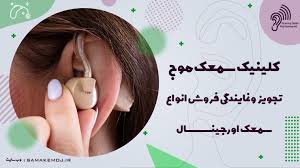Hearing loss affects millions worldwide, impacting communication, social interaction, and quality of life. Fortunately, advancements in technology have led to the development of sophisticated hearing aids, offering a lifeline to those experiencing خرید سمعک difficulties. This article explores the evolution, types, benefits, and future trends of hearing aids, highlighting their transformative impact on individuals with hearing impairment.
Evolution of Hearing Aids: The history of hearing aids dates back centuries, from ancient ear trumpets to the modern digital devices of today. The early 20th century saw the invention of the carbon microphone, a breakthrough that paved the way for electric hearing aids. These bulky devices evolved into smaller, more discreet models with the introduction of transistors in the 1950s. The digital revolution in the 1980s marked a turning point, leading to the development of programmable and more efficient hearing aids.
Types of Hearing Aids: Modern hearing aids come in various types, each catering to different types and degrees of hearing loss. Behind-the-ear (BTE) aids are versatile and suitable for most types of hearing loss, while in-the-ear (ITE) and in-the-canal (ITC) aids are more discreet and fit inside the ear canal. Completely-in-the-canal (CIC) and invisible-in-canal (IIC) aids are nearly invisible when worn, offering maximum discretion.
Benefits of Hearing Aids: The benefits of hearing aids extend beyond simply amplifying sounds. They improve speech understanding, enhance communication, and boost overall quality of life. By providing access to a wider range of sounds, hearing aids enable individuals to engage more fully in social activities and enjoy richer experiences. They also help prevent cognitive decline by stimulating the auditory system and keeping the brain active.
